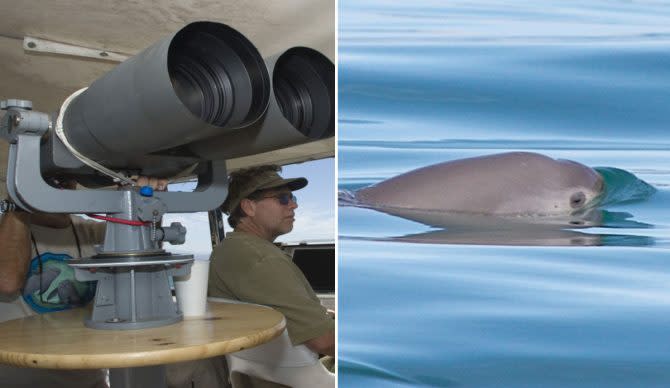Searching For the Vaquita Porpoise: the World’s Most Endangered Cetacean

Each May since 2015, the Sea Shepherd Conservation Society has undertaken a difficult mission. For three weeks, they search the oceans for the world’s rarest cetaceans, the vaquita porpoise.
The annual vaquita survey begins on May 5, and will end on May 26. In that time, Sea Shepherd members hope to document as many vaquitas as possible, but that’s a very tall order. The Vaquita, as you may know, is on the very brink of extinction. It’s estimated that there are as few as 10 left in the wild. The little species of porpoise was the first-ever to receive an extinction alert from the International Whaling Commission (IWC) in 2023.
“Despite nearly 30 years of repeated warnings,” the IWC wrote, “the vaquita hovers on the edge of extinction due to gillnet entanglement.”
The vaquita porpoise is found in only one small area of the world. Calling the northern-most part of the Gulf of California, Mexico home, their population numbers have plummeted in recent years. In 1997, researchers estimated a global population of around 570. In under two decades, that number had dropped to just 10. Since 2018, that number has remained relatively consistent, but more needs to be done.
Since gillnet rules and fishing bans were the subject of increased enforcement in 2018, the number of vaquitas dying in nets has decreased dramatically. But an illegal trade of the totoaba fish, which is found in the same waters as the vaquita, still poses a dire threat.
“The extinction of the vaquita is inevitable unless 100 percent of gillnets are substituted immediately with alternative fishing techniques that protect the vaquita and the livelihoods of fishers,” the IWC warned. “If this doesn’t happen now, it will be too late.”
The survey will take place in the UNESCO-recognized Vaquita Refuge, where gillnet fishing is banned. Due to their small size, vaquita porpoises are particularly likely to get trapped in gillnets or other human garbage. Since they require air to live, they eventually drown.
The Sea Shepherd survey will include two vessels patrolling a small strip of Mexico’s Upper Gulf of California. It’s led by Dr. Barbara Taylor, who has been dedicated to the study of vaquitas for over three decades.
Sea Shepherd works alongside the Mexican government in its conservation efforts. The hope is that the study will shed more light on what other steps need to be taken in order to keep the vaquita from disappearing.
The post Searching For the Vaquita Porpoise: the World’s Most Endangered Cetacean first appeared on The Inertia.

